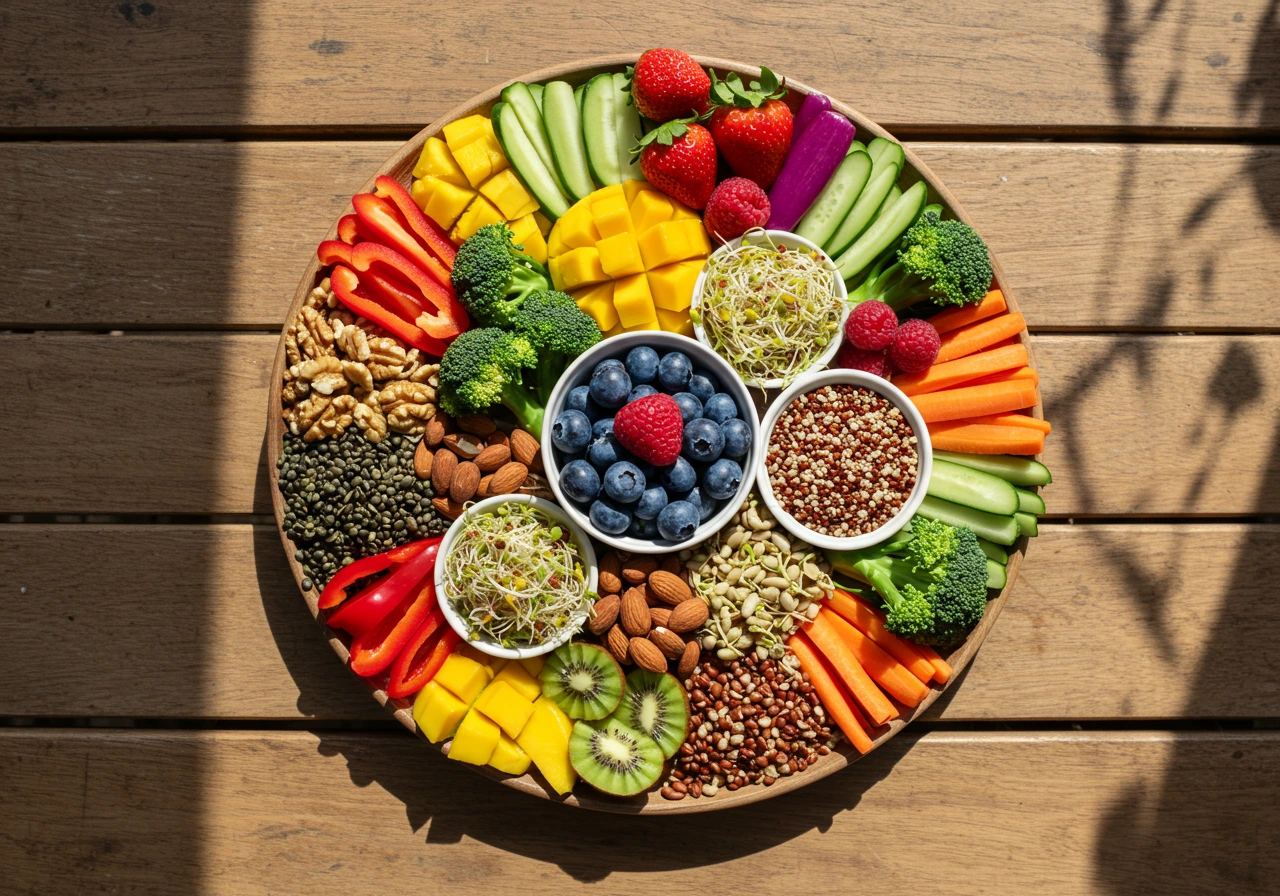Introduction
Eating raw and living well—two concepts that feel refreshingly in sync. This article is your complete guide to exploring the vibrant world of the raw vegan recipe. Whether you’re dabbling with plant-based meals or diving headfirst into the raw lifestyle, you’re in for a flavor-packed, nutrient-dense adventure. We’re not just sharing a recipe—we’re unwrapping the why, how, and what behind raw veganism. From selecting fresh produce to enhancing flavor without fire, each part of this series uncovers a facet of raw cuisine, backed by research, personal experience, and kitchen-tested love. And yes, I’ve personally tried the recipe and tweaked it until it wowed every skeptical taste bud. So, let’s kick things off with the roots of this movement—why raw, and why now?
Part 1: Understanding the Raw Vegan Recipe Lifestyle
What is a Raw Vegan Recipe All About?
Ah, the buzz around raw vegan recipe isn’t just hype—it’s a lifestyle choice rooted in simplicity and nature. A raw vegan diet means eating unprocessed plant foods that haven’t been heated above 118°F (48°C). Why? Because heating is said to destroy enzymes and diminish nutritional value. While that’s still a bit controversial, one thing’s for sure—your plate ends up looking like a rainbow of goodness.
Raw recipes are often made up of fruits, vegetables, nuts, seeds, and sprouted grains. You might think that limits your creativity, but on the contrary—it expands it. Think zucchini noodles, cashew cheese, date caramel, and spiralized veggie “pasta.” These dishes burst with color, crunch, and life. And no oven? No problem.
Why I Decided to Try a Raw Vegan Recipe
Let’s get real—I was skeptical at first. No cooking? No warm soup on a rainy day? But curiosity got the better of me. I decided to give raw veganism a go for one week, starting with a simple recipe. The difference in how I felt was almost instant. More energy. Less bloating. Clearer skin. Wild, right?
The recipe that changed it all for me? A creamy raw vegan zucchini pasta topped with a nut-based “cheese” sauce. No microwave. No stove. Just a food processor, a spiralizer, and a handful of ingredients straight from the produce aisle. That moment turned a one-week challenge into a lifestyle shift.
Core Principles Behind Every Raw Vegan Recipe
Every raw vegan dish follows some guiding principles that make it not just edible but exciting:
- Keep it fresh: Only raw, natural, and plant-based ingredients allowed.
- No animal products: That means no meat, dairy, or even honey.
- Low heat or no heat: Ingredients can be warmed slightly but never cooked.
- Enzyme preservation: One of the biggest motivations—preserving those natural enzymes that aid digestion and metabolism.
- No preservatives or artificial nasties: Say goodbye to processed sauces and store-bought dressings.
Honestly, it’s like giving your body a reset button. Your digestive system doesn’t have to work overtime to break down complex meals or additives. Everything just flows smoother.
The Difference Between Raw Vegan and Vegan Recipes
Don’t get it twisted—not all vegan meals are raw. A vegan recipe could include baked tofu, sautéed veggies, or grilled plant-based burgers. A raw vegan recipe, on the other hand, skips all of that.
In fact, I learned this the hard way when I proudly whipped up a “raw” coconut curry only to realize I’d simmered the sauce. Whoops. Lesson learned: If it’s been on a stove or in the oven, it’s not raw anymore.
Here’s a quick comparison to clear things up:
| Feature | Vegan Recipe | Raw Vegan Recipe |
|---|---|---|
| Cooking method | Cooked, baked, grilled | No heat or below 118°F |
| Ingredients | Plant-based (can be processed) | Whole, unprocessed plant-based only |
| Nutrient profile | Can vary | High in enzymes, water, and fiber |
| Texture | Soft, warm, often mushier | Crunchy, creamy, crisp, natural |
Does Raw Always Mean Healthier?
Well, yes and no. Eating raw can increase your intake of fiber, vitamins, and minerals. However, some nutrients like lycopene in tomatoes are more bioavailable after cooking. Plus, raw doesn’t always mean low-calorie or automatically healthy. You can totally overdo it on raw date balls, nut-based cheesecakes, and dehydrated seed crackers if you’re not paying attention.
That said, the raw approach nudges you toward mindful eating. You’re more connected to the food you’re preparing and consuming. There’s no zapping something in a microwave and wolfing it down. You soak. You blend. You plate like you mean it. And that intention often translates into a more conscious relationship with your body and wellness.
Common Myths About Raw Vegan Recipes—Busted
Let’s clear the air a bit. A few myths need busting, right here and now:
- Myth: You need expensive equipment.
Not true. A basic knife, a cutting board, and maybe a blender will do just fine. - Myth: It’s boring.
You’re kidding, right? Have you seen raw mango salsa on jicama chips? - Myth: Raw means cold and unappetizing.
Nope. Many raw dishes can be gently warmed or naturally heated through blending. - Myth: It’s only salads.
Oh, please. There are raw lasagnas, cheesecakes, and even tacos.
By now, you’re probably realizing that this whole raw vegan recipe thing isn’t a dull detox. It’s an invitation to experiment with taste, texture, and technique—all without turning on the oven.
Part 2: Understanding Raw Veganism
What is Raw Veganism?
So, what exactly is raw veganism? At its core, it’s a lifestyle that combines the principles of veganism—no animal products whatsoever—with a focus on consuming foods that are completely raw or minimally heated. In other words, nothing you eat is cooked above 118°F (48°C). That’s because higher temperatures are believed to destroy the natural enzymes in food—enzymes that support digestion and cellular function.
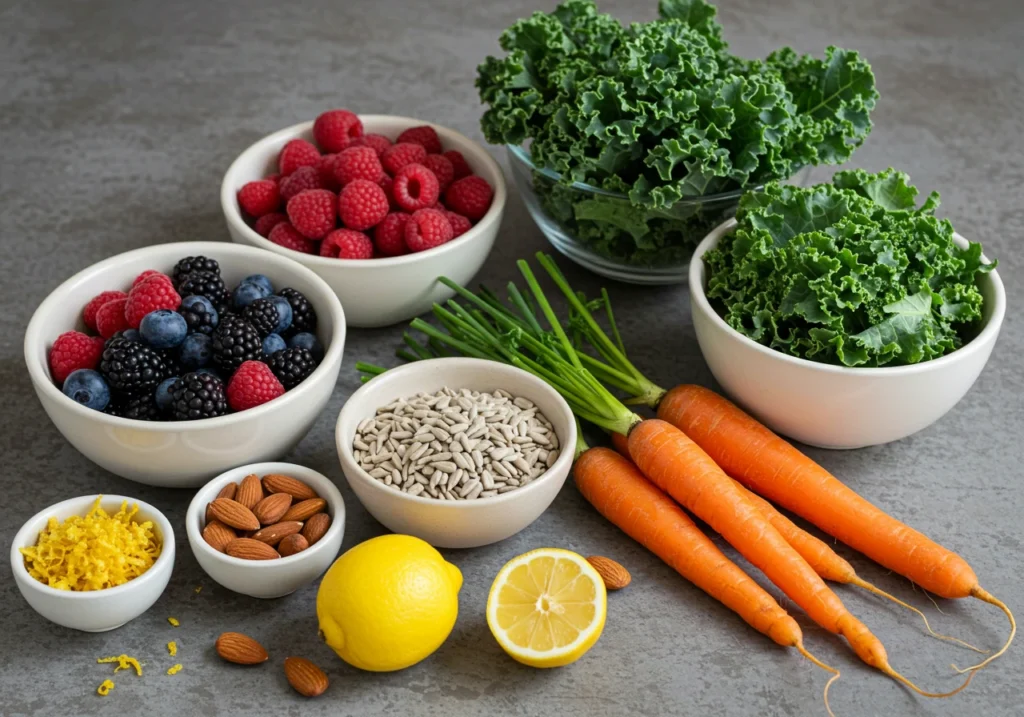
But wait, it’s not just salads and smoothies. This lifestyle invites creativity. You’re working with living foods—think sprouted grains, fermented veggies, dehydrated flax crackers, and decadent raw desserts. Raw vegans often rely on tools like spiralizers, food processors, and dehydrators to transform their ingredients into meals that are as satisfying as they are nourishing.
It’s not a fad. It’s a commitment to eating whole, nutrient-dense, plant-based foods in their most natural state. And if done right, it can be just as flavorful (if not more) than any cooked cuisine.
Health Benefits of a Raw Vegan Diet
If you’ve ever wondered whether a raw vegan diet is worth the hype, here’s your green light. There’s a laundry list of potential health perks—backed by both science and experience. Spoiler alert: I noticed a change within days of trying it myself.
Let’s start with digestion. Raw foods are rich in fiber and water, both essential for keeping your gut happy. Eating raw fruits, veggies, and sprouted seeds can help you stay regular, reduce bloating, and even support a healthy microbiome. Oh, and did I mention glowing skin? Yep—less sugar, more hydration, and an antioxidant boost from fresh produce can leave your complexion radiant.
Another big win? Increased energy levels. Since raw meals tend to be lighter and easier to digest, your body spends less energy on breakdown and more on action. I personally felt that afternoon crash vanish like fog in the sun.
Let’s not forget weight management. Many folks report sustainable weight loss thanks to the low-calorie yet nutrient-rich nature of raw meals. The high volume of plant-based ingredients can help you feel full without packing on the pounds.
But here’s the kicker: raw vegan diets can also reduce your risk of chronic diseases. Thanks to the abundance of antioxidants, healthy fats, and phytonutrients, you may lower your risk of heart disease, diabetes, and certain cancers. However, it’s key to do it right—planning balanced meals that include everything from iron to B12 (sometimes through supplements).
Honestly, the moment I stopped seeing raw food as restrictive and started seeing it as energizing, my entire outlook shifted. Your body knows when it’s being fueled well—and it responds with clarity, vitality, and bounce-in-your-step kind of joy.
For a powerful and nourishing twist on this concept, check out the Tropical Goji Berry Smoothie Bowl on Glamour —a perfect example of raw vegan food that tastes like dessert but fuels like rocket fuel.
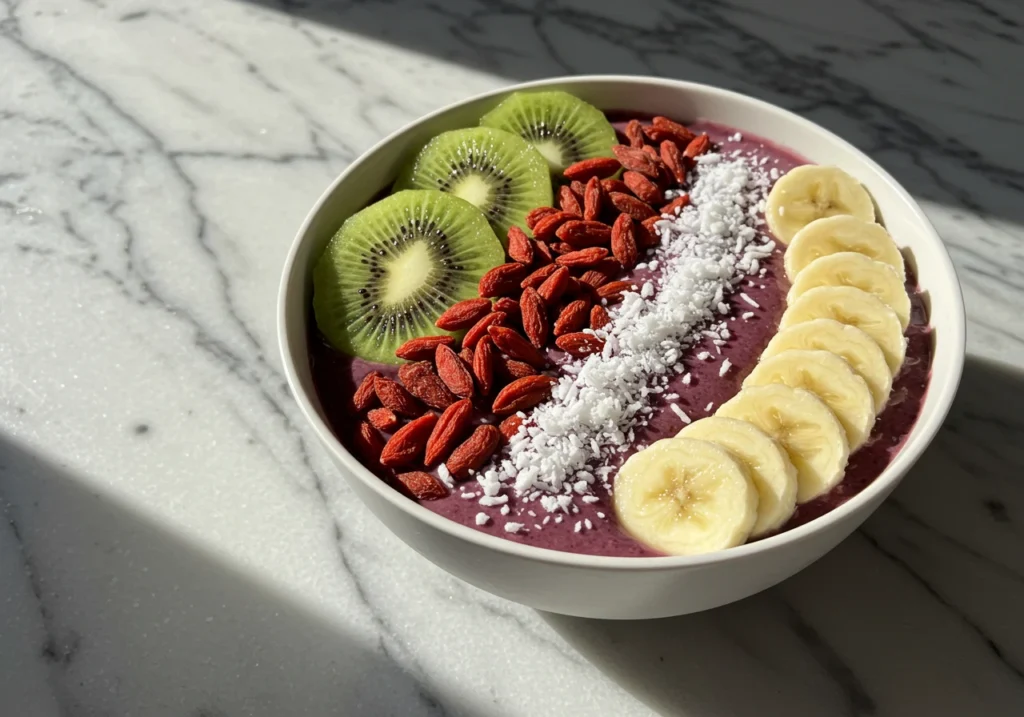
Common Misconceptions About Raw Veganism
Now let’s clear the air—because raw veganism gets its fair share of eye-rolls and myths. People love to toss around ideas that, honestly, don’t hold up under a microscope. So let’s debunk a few.
Myth 1: Raw vegans don’t get enough protein.
Actually, nuts, seeds, and especially sprouted legumes pack a decent protein punch. Add in hemp hearts, chia, and even leafy greens, and you’re covered.
Myth 2: It’s too restrictive to enjoy.
Wrong again. With dishes like raw tacos, zucchini pasta, and creamy avocado desserts, there’s plenty of culinary fun to be had. It’s all about learning to play with flavor in new ways.
Myth 3: It’s expensive.
It can be, but it doesn’t have to be. Staples like bananas, carrots, cabbage, and sunflower seeds are all budget-friendly. Plus, there’s less reliance on processed or packaged products.
Myth 4: It’s just a fad.
Nope. People have been eating raw for centurWhat is Raw Veganism?es. The modern raw food movement might be trendy, but the philosophy behind it is ancient and intuitive—eat foods close to nature, unaltered, and full of life.
Once I got past these misconceptions, the raw vegan lifestyle no longer felt intimidating. It felt… free. Like I wasn’t just eating to live—I was living to eat better.
Part 3: Essential Ingredients in Raw Vegan Recipes
Fruits and Vegetables
Let’s be honest—fruits and vegetables are the absolute heart and soul of every raw vegan recipe. They don’t just bring color to your plate; they bring life to your body. From crisp greens to juicy berries, these vibrant gems are rich in fiber, vitamins, minerals, and—let’s not forget—antioxidants that help combat inflammation and oxidative stress.
Because there’s no cooking involved, the freshness and quality of your produce matter more than ever. You’re not masking flavors with heavy sauces or heat, so what you buy is what you taste. This is why local farmers’ markets and organic sections become your best friends.
Leafy greens like spinach, kale, and romaine act as nutrient powerhouses. Meanwhile, avocados deliver creamy richness and bananas lend natural sweetness. Then there’s the crunch factor—carrots, cucumbers, bell peppers—oh my! Each veggie plays a role in flavor, texture, and satiety.
Honestly, you can’t go wrong loading up your kitchen with these plant-based superheroes.
Nuts and Seeds
If fruits and veggies are the color palette, then nuts and seeds are the texture masters of a raw kitchen. These tiny but mighty ingredients deliver healthy fats, plant protein, and essential minerals that keep your body humming with energy.
Cashews are my go-to for creating creamy bases—think sauces, cheesecakes, and dips that rival dairy versions. Almonds are perfect for crunchy crusts and sprouted nut milk. Walnuts, when seasoned just right, mimic ground meat for raw tacos. Pretty wild, huh?
On the seed side, flaxseeds and chia seeds shine for their omega-3 fatty acids and natural gelling properties. You can use them to create puddings or bind raw burgers together. Meanwhile, pumpkin and sunflower seeds add that satisfying crunch to salads and wraps.
To make nuts and seeds easier to digest—and to enhance nutrient absorption—many raw foodists soak or sprout them. And it’s a total game changer, both flavor- and health-wise.
Sprouted Grains and Legumes
Ah yes, the unsung heroes—sprouted grains and legumes. These might not seem as flashy as spiralized veggies or nut-based dressings, but they bring serious nutritional firepower to any raw vegan recipe.
So what’s sprouting, exactly? It’s the process of soaking grains or legumes in water and allowing them to begin germinating. This unlocks enzymes, breaks down anti-nutrients like phytic acid, and boosts the bioavailability of key vitamins and minerals. Translation: your body absorbs more goodness with less digestive stress.
Sprouting is easier than you’d think. Take mung beans, for example—just soak them overnight, rinse them twice daily, and within a couple of days, you’ve got tender, slightly crunchy sprouts. Quinoa, lentils, and buckwheat are also awesome choices. There are loads of tutorials on YouTube that can walk you through the process step by step.
These sprouts can be tossed into salads, wraps, or even blended into savory spreads. You’ll be shocked at how full and energized they keep you, without weighing you down.
Fermented Foods
Now let’s talk gut health. One of the most underrated categories in raw cuisine is fermented foods. These probiotic-rich superstars not only aid digestion, but they also boost immunity and can seriously level-up your meals with tang and zest.
Top of the list? Rejuvelac. This fizzy, slightly sour drink made from fermented grains like wheat berries or quinoa is packed with live cultures. It’s often used as a base in raw vegan cheeses to create that signature sharpness you’d expect from aged dairy.
Another fave? Raw sauerkraut and kimchi. As long as they haven’t been pasteurized or heated, they’re fair game. These crunchy delights add brightness to wraps, bowls, and salads.
Fermentation is like alchemy—turning humble ingredients into gut-friendly gold. Plus, it brings that elusive umami flavor to your meals, which is often hard to achieve in raw dishes.
Honestly, once I started adding fermented foods into my recipes, I noticed a difference in digestion and flavor. It’s a win-win.
Part 4: Essential Tools for Raw Vegan Cooking
High-Speed Blender
When you’re working with raw vegan recipes, a high-speed blender is nothing short of a magic wand. It transforms tough ingredients like soaked nuts, frozen fruits, and leafy greens into silky-smooth sauces, creamy smoothies, and even warm raw soups (yes, warm—but not cooked). I’ve whipped up cashew cheese, banana “nice” cream, and velvety green smoothies in mere seconds. The power of these blenders ensures a smoother texture and better consistency, especially when blending fibrous produce. Whether it’s a Vitamix or a Blendtec, this tool brings both convenience and creativity to your countertop—making it an absolute essential in any raw kitchen.
Food Processor
Don’t underestimate the humble food processor—it’s the behind-the-scenes hero of any raw vegan kitchen. This powerhouse handles the heavy lifting when it comes to chopping, slicing, and mixing, especially for chunkier or drier blends. From making raw burger patties to energy balls, nut butters, and even pie crusts, it saves tons of prep time and creates the right texture for recipes where you still want a bit of bite. Personally, I use mine almost daily—it’s fantastic for “meat” fillings made with walnuts and mushrooms or for a quick blitz of dates and almonds to create a crusty, chewy raw treat.
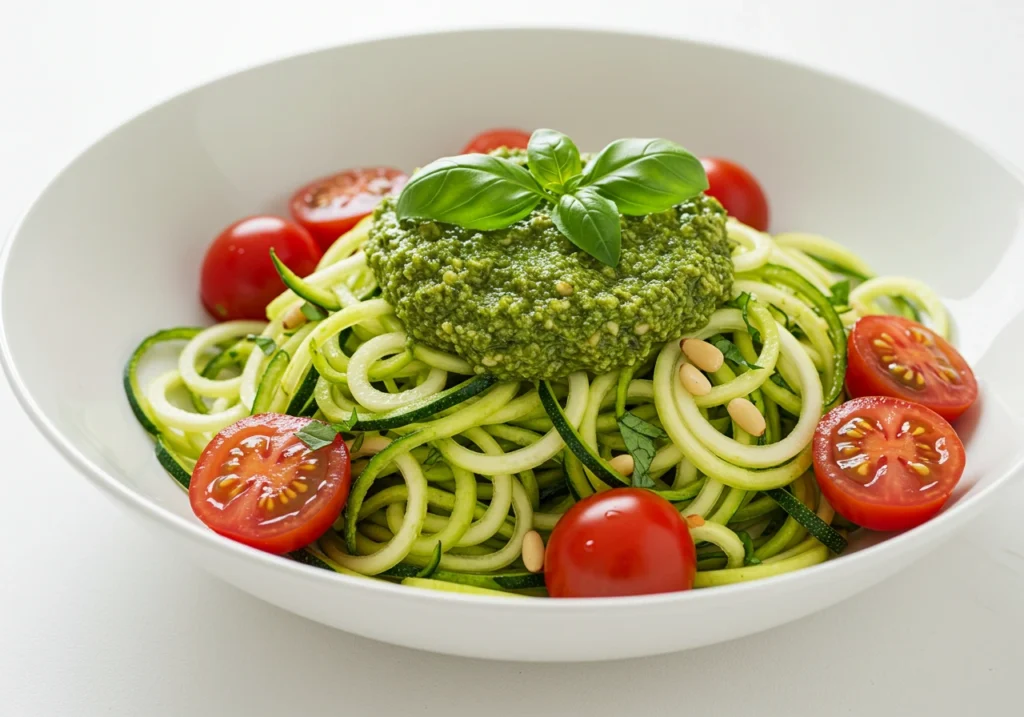
Dehydrator
Ah, the dehydrator—a raw foodist’s version of an oven, minus the heat damage. This genius gadget works by blowing warm air (usually under 118°F) over your food for several hours, slowly removing moisture while preserving nutrients and enzymes. You can craft chewy fruit leathers, crunchy flax crackers, or even raw pizza crusts. What I love most? The smell of herbs and tomatoes slowly intensifying as they dehydrate—it’s addictive. According to Wikipedia, this low-temp drying method has been used for centuries. And sites like Bon Appétit offer creative uses that go far beyond the basics. It takes patience, but trust me—it’s worth it.
Spiralizer
Want to ditch pasta but keep the twirls? Meet the spiralizer. This nifty little gadget turns vegetables like zucchini, carrots, and sweet potatoes into noodle-like spirals, perfect for raw vegan “pasta” dishes. I still remember the first time I made zoodles—I was blown away by how fun and fresh they tasted, especially tossed with a tangy pesto or creamy avocado sauce. It adds playfulness to your plate and gets even picky eaters excited. Whether hand-held or countertop, it’s budget-friendly and easy to clean. Plus, the texture? Crunchy, juicy, and undeniably satisfying. It’s a must-have for adding flair and function to your raw food game.
Part 5: Breakfast Recipes
Energizing Smoothie Bowls
Let’s be real—raw vegan breakfasts don’t have to be boring bowls of chopped fruit. Enter smoothie bowls: thick, creamy, and totally Insta-worthy. These bowls are more than just pretty—they’re packed with fiber, antioxidants, and slow-digesting plant-powered energy to kick off your day right. The beauty lies in the layering: a luscious smoothie base topped with crunchy bits, seeds, fruits, and superfoods galore.
What’s even better? You can prep most of it ahead of time. In just five minutes, your breakfast can go from blender to bliss. Whether you’re running late or savoring a slow morning, smoothie bowls strike the perfect balance between flavor and function.
Tropical Goji Berry Smoothie Bowl
Get ready for a sunshine explosion in a bowl. Combine fresh papaya, sweet pineapple, ripe mango, tangy orange, a splash of lime juice, and hydrating coconut water in a high-speed blender. Toss in a small handful of goji berries—they’re rich in antioxidants and add a pop of tartness.
Once blended into a creamy texture, pour it into a bowl and dress it up. Think banana slices, chia seeds, shredded coconut, and even a few extra goji berries for good measure. It’s a tropical vacation for your taste buds—and your gut will thank you for the fiber-rich, enzyme-packed start.
This exact smoothie bowl is inspired by Glamour’s raw recipe and remains one of my absolute favorites for its simplicity and vibrant flavors.
Raw Granola with Nut Milk
Now, if you miss the crunch of traditional breakfast cereals, you’re going to love this one. Raw granola gives you all the texture without the additives or baking. It’s chewy, slightly sweet, and pairs perfectly with fresh nut milk. Plus, it stores like a dream, so you can make a batch for the week and grab it on the go.
The natural sweetness from dates and coconut will satisfy your cravings, and the mix of nuts and seeds keeps you full until lunch.
Almond and Date Granola
Start by pulsing raw almonds and pitted dates in a food processor until they form a chunky mix. Add sunflower seeds, unsweetened coconut flakes, and a dash of cinnamon for warmth. Spread the mixture out and dehydrate it overnight if you want extra crunch—or enjoy it soft and sticky for a dessert-for-breakfast feel.
Pour over your favorite homemade almond milk—just blend soaked almonds with filtered water, a touch of vanilla, and a pinch of salt, then strain. This creamy combo is pure morning bliss.
And here’s the cool part: you can customize your granola endlessly. Throw in cacao nibs, dried mulberries, or even hemp seeds. Honestly, once you’ve tasted this raw granola, boxed cereals just don’t cut it anymore.
Part 6: Lunch Recipes
Hearty Salads
Gone are the days when salads were sad side dishes. In the raw vegan world, a salad is a full-blown meal—vibrant, textural, and loaded with nutrients that actually keep you satisfied. We’re talking crunch, creaminess, spice, and depth. The key? Layers. Building your bowl with protein-rich components, healthy fats, and bold flavors turns it from “meh” to “more, please!”
And here’s the fun part: no cooking involved means lunch is faster, fresher, and more energizing. You get to keep all the good stuff intact—enzymes, vitamins, minerals—all while feeding your body and taste buds alike.
Raw Vegan Taco Salad
This salad? It’s a fiesta in a bowl. Start with a crisp bed of romaine lettuce. Add finely chopped cauliflower for a fluffy, rice-like texture. Toss in cherry tomatoes, diced red onion, creamy avocados, colorful bell peppers, chopped jalapeño, and a generous handful of fresh cilantro.
Now for the star of the show: the “meat.” Blend mushrooms, carrots, walnuts, and a touch of tamari, cumin, smoked paprika, and garlic in a food processor until it’s chunky, savory, and oh-so-satisfying.
Top it all with a lime-cashew crema or a spicy tahini drizzle. This bowl hits all the right notes—crunchy, creamy, zesty, and totally raw. Inspired by The All Natural Vegan, this one’s a must-try if you’re craving something hearty and bold at noon.
Raw Soups
Think raw soups are just cold juice in a bowl? Think again. These blends are surprisingly rich, flavorful, and filling—especially when you layer spices, aromatics, and fresh herbs. A chilled soup done right is a refreshing pick-me-up and the perfect answer to midday heat or sluggishness.
The trick is to blend until smooth while balancing acidity, sweetness, and spice. Bonus points if you let it sit for a few hours to let the flavors meld.
Chilled Tomato and Fennel Soup
Start with fresh, ripe tomatoes—the juicier, the better. Add thinly sliced fennel bulb for a light anise flavor, a clove of raw garlic, a squeeze of lemon, and a pinch of sea salt. Blend it all up with a few sprigs of fresh basil and parsley for brightness.
Serve chilled, garnished with a drizzle of olive oil, cracked pepper, and a few thin slices of fennel on top. It’s bright, earthy, and tastes like a sunbeam in a bowl.
Want to up the protein? Add soaked sunflower seeds or a dollop of raw cashew cream. This soup proves that raw meals can be comforting, cooling, and just plain delicious.
Part 8: Snack and Appetizer Recipes
Dips and Spreads
There’s something about dips and spreads that feels indulgent—like you’re snacking fancy. But when you make them raw, they become both nourishing and downright addictive. Perfect for pairing with veggie sticks, raw crackers, or slathered in a lettuce wrap, these little flavor bombs are fast to whip up and easy to store.
What’s more, they’re great for meal prep or entertaining. You can blend a batch, stash it in the fridge, and always have something savory and satisfying on hand. Oh, and they’re loaded with protein, healthy fats, and plant-powered flavor.
Sunflower Seed and Sundried Tomato Spread
Soak 1 cup of sunflower seeds for at least 4 hours, then drain and rinse. Blend them with ½ cup sundried tomatoes, 1 clove garlic, 2 tablespoons of lemon juice, a splash of olive oil, and a mix of dried basil, oregano, and a pinch of sea salt.
The result? A rich, tangy, slightly smoky spread that works as a dip, a wrap filler, or a sandwich base. Honestly, it tastes way more decadent than you’d think—and it’s packed with vitamin E, minerals, and protein.
This has quickly become one of my go-to snacks. It’s hearty, it’s full of umami, and it keeps well for days. Win-win-win.
Raw Crackers
Sometimes you just need that crunch. And if you think eating raw means giving that up, you’re in for a happy surprise. Raw crackers are the answer—crispy, savory, and 100% whole-food. Made with seeds, veggies, and spices, these crackers are as customizable as they are crave-worthy.
The best part? Once you make a batch, you can store them in an airtight container for up to two weeks. They’re perfect for travel, busy workdays, or those late-night snack cravings.
Flaxseed and Herb Crackers
In a large bowl, combine 1 cup ground flaxseeds with ½ cup whole flaxseeds, ¼ cup finely chopped onion, 2 tablespoons nutritional yeast, and your favorite herbs—think rosemary, thyme, or dill. Add a pinch of sea salt, a dash of cumin, and enough water to form a sticky dough.
Spread the mixture thinly onto a dehydrator tray and dry for 8–10 hours until crisp. No dehydrator? No sweat—use your oven on its lowest setting with the door cracked.
These crackers pair perfectly with the sunflower-tomato spread above. They’re packed with fiber, omega-3s, and bold flavor—without a single processed ingredient.
Part 9: Dessert Recipes
Raw Cheesecakes
Who says dessert has to be baked to be delicious? Raw cheesecakes are one of the crown jewels of the raw vegan kitchen—creamy, dreamy, and totally satisfying, without a hint of dairy or refined sugar. What makes these desserts so magical is the silky texture created by soaked cashews, paired with a naturally sweet base of nuts and dates. Oh, and they’re super easy to freeze and store, making them perfect for prepping ahead or indulging throughout the week.
Not only are these treats gluten-free and refined sugar-free, but they also sneak in healthy fats, fiber, and vitamins. Talk about dessert doing double duty.
Raw Mango Cheesecake
Start with the crust. Blend 1 cup pitted dates with 1½ cups raw almonds (or walnuts) and a pinch of sea salt until sticky and crumbly. Press it into the bottom of a springform pan or muffin tin.
Next, the creamy magic: Blend 2 cups soaked cashews, 1 cup fresh mango chunks, ¼ cup coconut oil, ¼ cup maple syrup (optional), and 2 tablespoons lemon juice until velvety smooth. Pour it over the crust and pop it in the freezer for at least 4 hours.
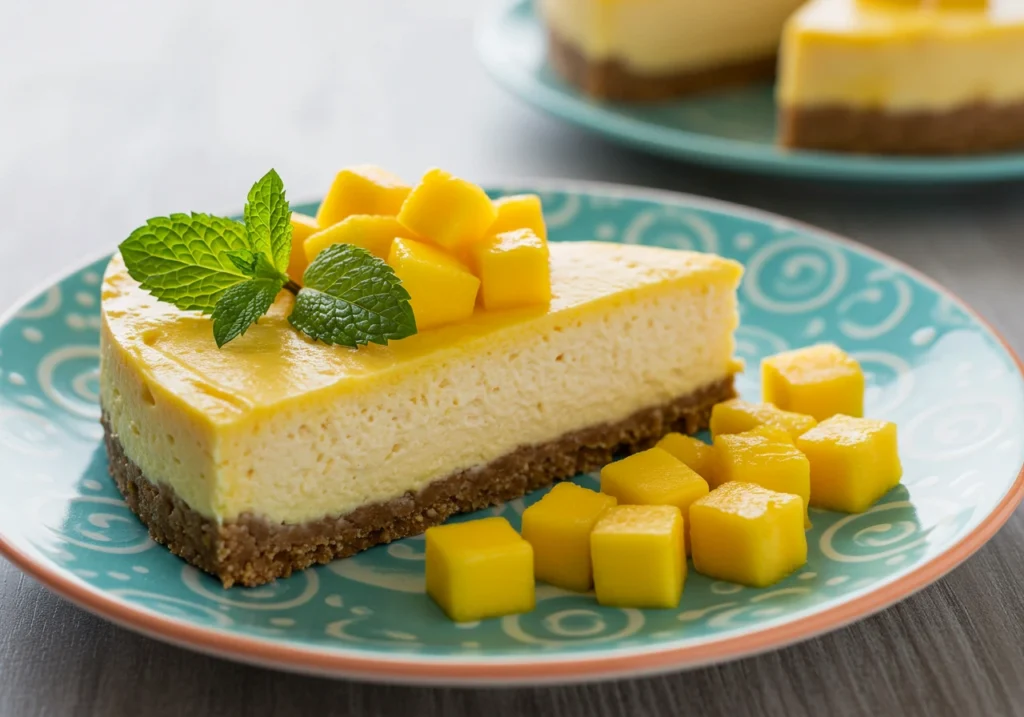
The result? A tropical, melt-in-your-mouth cheesecake that’ll fool even the most devoted dairy lover. Inspired by the delicious version featured at VeganAngela, this one’s always a crowd-pleaser.
Raw Chocolate Treats
Let’s get one thing straight—raw vegan recipe doesn’t mean skipping chocolate. Nope. In fact, it might just mean discovering better chocolate. Thanks to raw cacao powder, dates, and nuts, you can whip up decadent, fudgy treats without turning on the oven or feeling the sugar crash.
These raw desserts are packed with magnesium, antioxidants, and healthy fats—and because you control the ingredients, you get all the flavor with none of the nasties.
Raw Chocolate Brownies
Start by blending 2 cups pitted dates in a food processor until sticky. Add 1½ cups raw walnuts, ½ cup raw cacao powder, and 1 teaspoon vanilla extract. Pulse until it forms a thick, brownie-like dough.
Press the mixture into a small pan lined with parchment paper. You can refrigerate it for a firmer texture or eat it straight from the processor—I won’t judge.
For a fun twist, top with shredded coconut, a drizzle of almond butter, or a pinch of sea salt. These brownies are rich, chewy, and honestly taste like a guilty pleasure—but they’re completely clean.
These have become my go-to late-night treat. Satisfying, indulgent, and nutrient-dense, they prove that you never have to sacrifice flavor for health in a raw vegan recipe.

